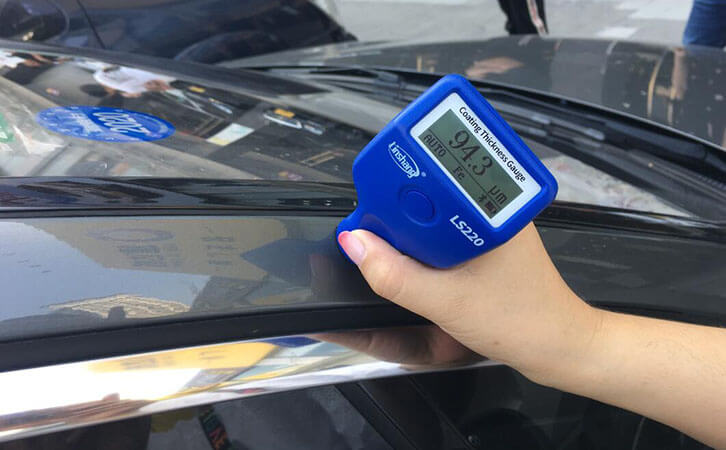How to Determine Sheet Metal by Paint Film Thickness Gauge ?
With the continuous development of the used car market, more and more people tend to buy used cars. It is true that the cost-effectiveness of second-hand cars is the most valued by customers. The performance of the car should not be too bad and the price should not be too high. Otherwise, why not buy a new car and buy a used car instead. So how to check the cost-effectiveness of second-hand cars or how can second-hand car sellers show customers the cost-effectiveness of their cars?
When we go to the used car market, we often see a second-hand car appraiser holding a small instrument. Many people are new to this instrument. In fact, this is a professional instrument for measuring the thickness of automobile paint surface-paint film thickness gauge . If the body of the vehicle is sunken or deformed after a collision, sheet metal repair is required. Therefore, we generally use the paint film thickness gauge to detect the car paint surface thickness to directly determine the sheet metal and paint conditions of a car and also to indirectly determine the damage degree of the car. This is a very simple instrument that requires no calculations. Press the probe vertically on the surface of the car. The car paint thickness will be immediately displayed on the screen of the instrument. Paint thickness is usually very thin, measured in microns.
So how do we use the paint film thickness gauge to determine whether the car has been repaired with sheet metal? The average thickness of Japanese and Korean cars is about 80-100 microns, while the thickness of German , American cars is about 110-200 microns. Of course, due to different brands, models, the paint finish of the car may change with the improvement of production technology. Generally, the paint surface thickness measured by the paint film thickness gauge is more than 400 microns, which basically can be judged that the car has been repaired with sheet metal. We can also compare with the thickness of the paint on the roof, because the probability of accidents on the roof is small. We can use a paint film thickness gauge to measure the two parts of the body and the roof, respectively. Then perform three measurements on these two parts and finally measure each part. Then take the average value of the measurement data. If the paint thickness on the body and the roof are quite different, we can also judge the repair status of the sheet metal of the car.
In addition to paint film thickness gauges, many people use other methods to make judgments. For example, in well-lit conditions. We can observe from a distance and see if the paint surface has color difference by changing the angle and whether the paint surface changes naturally. We can also judge by tapping the cover and listening to the sound it makes. If the cover has not been made of sheet metal, the sound is generally crisp. But if it has been made of sheet metal, the sound of tapping will become dull. The above methods are summarized by some experienced car appraisers. However, these methods are relatively subjective. Sometimes we can't convince the customer, so we need to use a professional paint film thickness gauge to check the car paint thickness. Speak with data and present facts in front of customers. This can help customers understand the condition of the car and can also help second-hand car sellers close orders. It is a win-win situation! If you need to evaluate the repair of a used car, please consult us.
- High precision coating thickness gauge for used car
- Automotive paint protection films coating thickness gauge
- Plating Thickness Measuring Instrument for Detecting Anti-corrosion Coating
- Linshang LS220, LS191, LS160A– Necessary for Car Cover Inspection
- Coating Thickness Gauge for Second Hand Vehicle
- Zero Adjustment Step of Coating Thickness Gauge
